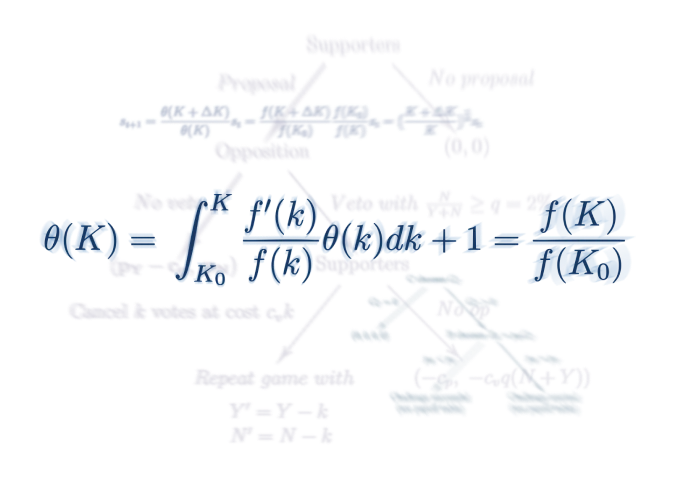



From a bird's eye perspective, the Frankencoin system resembles a bank that creates money against collateral. In the traditional banking system, a bank might accept a house as collateral, and prints some money in the form of a mortgage into the account of the owner. When doing so, banks need to observe some reserve and other legal requirements to ensure the mortgage is well-secured. The Frankencoin system essentially enables users to do the same, printing some money against a collateral. Also, like a bank, the Frankencoin system has a reserve pool that resembles the equity capital of a bank and serves as a buffer to absorb risks. However, in contrast to a bank, there is nothing that qualifies as lending as the users print their money themselves, processes are largely automated and fully transparent, and there is no explicit governance besides a veto mechanism that is open for everyone with enough pool shares.
If used with the necessary care, most definitely. Most of the usefulness of the Frankencoin comes from its decentralized nature. It is open, fully transparent, and freely interactible by humans and software alike. Thanks to its transparency, anyone can analyze its solvency at any moment. If it is in imbalance, it can be expected to be attacked by speculators who know exactly at which market prices the Frankencoin is not fully backed any more. The goal is not to imitate traditional banking, the goal is to create something immanently better.
Frankencoin employs a novel liquidation mechanism that uses auctions for two purposes at once: price discovery and liquidation. Thanks to that, Frankencoin does not depend on external price sources (oracles), making it more versatile and decentralized than other stablecoins.
FPS is the governance token of the Frankencoin system. Each FPS represents a share in the reserve pool of the Frankencoin system. Anyone can mint additional FPS by contributing to the reserve pool. Also, after a holding period of 90 days, it is possible to redeem FPS again, getting some funds from the reserve pool in return. Depending on how the reserve pool changed in the meantim, the system might return more or less than initially contributed. Holding FPS also gives the owner voting rights in the system, whereas the number of votes is both proportional to the number of FPS held and the holding duration. Anyone with at least two percent of the votes gains veto rights.
FPS token holders can gain veto rights if they hold enough FPS for a long enough time. All governance in the Frankencoin system is based on these veto rights. The low entry barrier of two percent as well as the possibility for smaller holders to team up makes the governance process very decentralized, as even small holders have the ability to veto decisions. In case of disputes between FPS holders, there is a special function that allows holders to cancel each others' votes. That way, one can expect the moderate voices to prevail.
The Frankencoin is softly pegged to the Swiss franc through a combination of technical constraints and economic incentives. Most importantly, each Frankencoin ZCHF are backed by collateral worth at least one Swiss franc. Furthermore, the governance token holders have a strong interest in the Frankencoin tracking the value of the Swiss franc and at the same time are equipped with the tools to keep it that way, namely the system's interest rate policy. In finance theory, two assets of non-zero value with identical risk-adjusted returns also have the same market price. Therefore, it is possible to ensure that the long-term value of the Frankencoin is one Swiss franc. The rest is arbitrage.
The Frankencoin is not risk-free. There are technical, governance, and economic risks. The technical risks include the possibility of the smart contracts having an exploitable weakness or the frontend being hacked, amont others. The governance risks includes the risk of FPS tokens holders not carefully monitoring the system despite their economic interest. Furthermore, there is a significant economic risk of the Frankencoin losing its peg to the Swiss franc due to a crash in the value of the collateral assets. An additional economic risk is that of a failure of the market to do intertemporal arbitrage between the long-term and the short-term value of the Frankencoin, leading to temporary depegs in case of strong market pressure.
In case the market crashes and the collateral assets lose value faster than they can be liquidated, the system incurs a loss. This loss is in first priority covered by the reserve provided by the individual collateral owners. For example, if someone has borrowed 100'000 ZCHF from a position that has a reserve requirement of 20%, only 20'000 ZCHF are held back. So if the collateral is liquidated at a price between 80'000 ZCHF and 100'000 ZCHF, the loss can be covered by that reserve. Only if the individual reserve does not suffice, the system starts to access the reserve pool provided by the FPS holders. If the reserve pool does not suffice either, the reserves provided by all other collateral owners is tapped into. In effect, this means that large borrowers should care about the system's stability and maybe buy some FPS to take part in the governance process. If this reserve does not suffice either, there is not sufficient collateral left and the fundamental value of a Frankencoin falls below one Swiss franc. This risk is hard to quantify. We believe it to be small, but not zero.
In such a worst case scenario, some FPS holders might try to leave the sinking ship and redeem their pool shares before the losses materialize. Attentive FPS holders that have borrowed against sound collateral are advised to prevent that from happening by cancelling the votes of those they suspect to be tempted to flee. Cancelling another FPS holders votes has the side effect of also resetting their holding clock, preventing them from redeeming their FPS againt the reserve pool for ninety days and ensuring that they stay in the ship with the other FPS holders.
No, it neither qualifies formally nor functionally as a security. It does not qualify formally as a security under Swiss law as it does not represent a claim towards an issuer. Also, it does not qualify functionally as a security as it does not serve a financing purpose.
Yes, to some extent. The Frankencoin addresses issues within the current system of money creation, highlighting how it distorts capital allocation. For example, regulatory constraints may incentivize investments that aren't optimal for society. Traditional capital requirements tend to favor certain sectors like real estate and government bonds over others. By leveraging blockchain technology, Frankencoin offers an alternative outside the traditional financial system. It empowers individuals by allowing them to create their own money, potentially leading to a stronger economy and more growth if used responsibly.